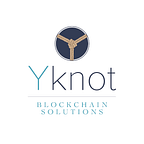2. Cryptography — The anchor in the storm
In our previous instalment of this series, we unpacked the concept of decentralisation. We defined decentralisation as our ocean in which all our unexplored possibilities exist. We saw that decentralisation enables people to transact directly with one another without relying on a trusted intermediary or even trusting each other. We can trust others because the decentralised network is encrypted and therefore trustworthy. A trustworthy network enables you to buy, invest, and sell in peace because you know it is reliable.
The question many might have though is: how safe are these transactions which blockchain manages? The simple answer is that they are just as safe as any other payment you make through a bank system. Here’s why: cryptography.
Cryptography
The topics of cryptography and network security have grown to be part of our everyday life. We read about them in the news, and they form part of our social conversation. But what exactly is cryptography and how does it work?
We can start to think of cryptography as an anchor. Anchors are a type of security for a boat. Anchors fix our boat to a certain position and keep it from going adrift in the current. Pretty simple.
The word ‘crypto’ is derived from ‘cryptography’. Cryptography is defined as the art of writing and solving codes. In other words, it is the science and art of transforming data to make it secure and immune to unauthorised access and network attacks.
Blockchain is built around cryptography, and cryptography enables the sharing of information in the presence of adversaries. Cryptography is what secures the information — whether transaction history, records, or any other important piece of information — in a reliable, unchangeable format.
Blockchain and decentralisation rely on cryptography. This brings authoritativeness behind all the interactions in the network.
Information is an asset that has value. As an asset, information needs to be secured from attacks. For information to be secured, it needs to be hidden from unauthorised access (confidentiality), protected from unauthorised change (integrity), and it needs to be available to an authorised person or entity when it is needed (availability).
Cryptography and network security aim to provide data integrity, data authentication, entity authentication, and nonrepudiation. Blockchain is built upon these principles.
These terms may sound foreign, but what they basically try to communicate is that cryptography encrypts your information (makes it private) and decrypts it again so that you can access it in human readable format. The process of encryption is a very reliable and safe way to store and transfer information through the network.
If you’ve ever bought something online, your bank account details were encrypted for your protection. We can also encrypt certain conditions into a blockchain, like a contract, that specifies an agreed upon requirement in the form of a smart contract.
Blockchain and distributed ledger technologies (DLTs) have enabled smart contacts. Smart contracts are executable program code or scripts which reside on a blockchain. They execute only once predetermined conditions are met. When we automate the execution of an agreement (workflow) which automatically triggers the next action so that all participants can be immediately certain of the outcome, without an intermediary’s involvement, we save time and money. Smart contracts will be discussed in more detail in our seventh article.
Okay, so now we know that cryptography and smart contracts provide information and network security. Yknot Blockchain Solutions has the necessary skills and knowledge to develop these kinds of private and secure networks using smart contracts to innovatively solve any problem.
We have used these technologies to build solutions for a wide variety of industries including banks, medical insurance companies, education institutions, mineral resource administrators, and private investment funds.
Now that you understand the basics of decentralisation and the safety and trust which comes with cryptography, our next instalment will take a deeper look into blockchain as a type of distributed ledger technology.
This article was written for educational purposes by Yknot Blockchain Solutions. We know the ropes when it comes to building blockchain-based solutions on the Telos network. Contact us to get all hands on deck for your next expedition.
** The rest of the series will be published on medium.com and on our website at y-knot.io
